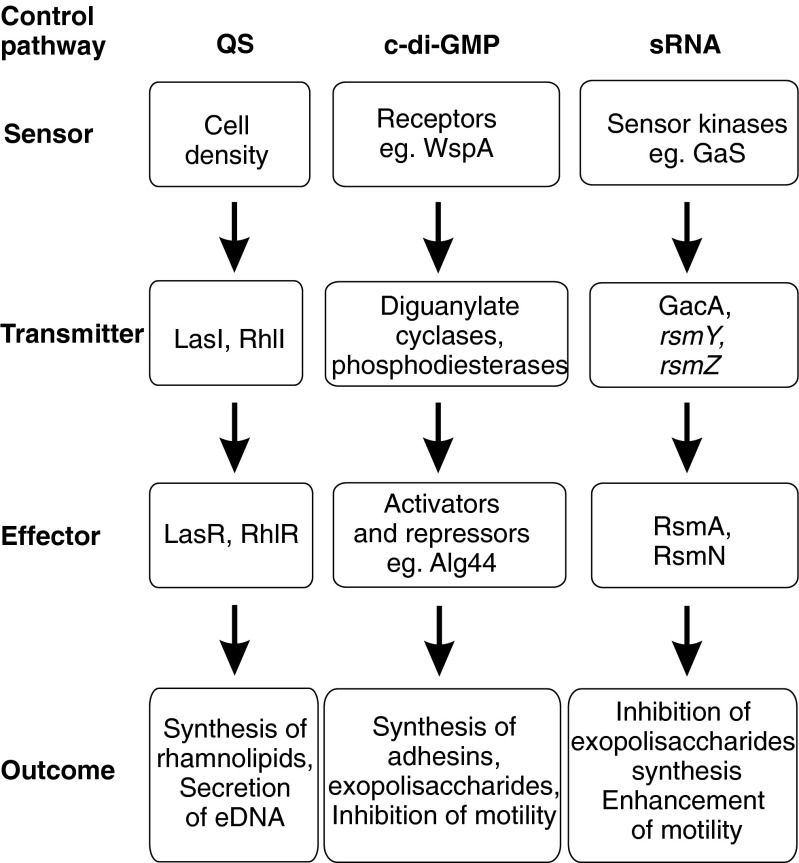Fig. 3.
Control of biofilm formation in P. aeruginosa. Three control pathways are shown. In two AHL-based QS pathways, cell density plays a role of the environmental signal. The signal is then transferred through the transmitter proteins LasI and RhlI to the effector proteins LasR and RhlR, being transcriptional regulators. The QS system controls the synthesis of rhamnolipids and secretion of eDNA. In c-di-GMP signaling, the level of c-di-GMP is sensed by sensor proteins—receptors which govern the metabolism of this molecule through the activity of diguanylate cyclases (DCGs) and phosphodiesterases (PDEs). Upon binding to the effector proteins, which are activators or repressors acting at transcriptional or post-transcriptional levels, c-di-GMP controls the synthesis of adhesins and exopolysaccharides and inhibits the motility. The control by sRNA involves the activation of sensor kinases, e.g., GacS, which phosphorylates transmitter protein GacA, leading to the subsequent activation of small RNAs, inhibition of effector RsmA activity, and, finally, to the inhibition of exopolysaccharides synthesis and enhancement of motility

